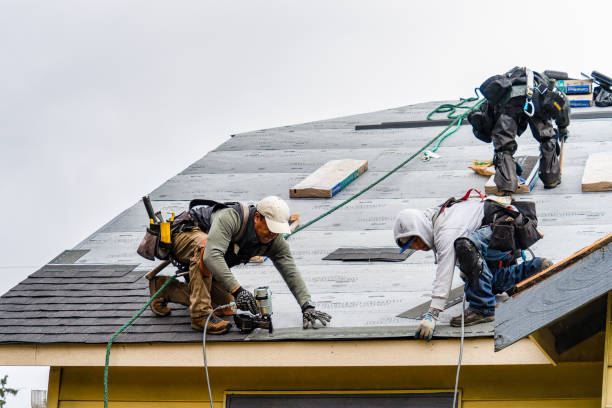
Roofing Solutions for Agricultural Barns and Stables
When it comes to agricultural barns and stables, roofing solutions play a vital role in ensuring reliable and durable protection for livestock and stored goods. Discover effective strategies and materials to safeguard your structure and maintain its structural integrity.
if you want to get roofing services
In this article, we will explore various roofing solutions specifically designed for agricultural barns and stables. From traditional options to modern innovations, we will discuss the benefits, considerations, and best practices for roofing in agricultural settings.
1. Traditional Roofing Materials
1.1 Corrugated Metal
Corrugated metal roofing is a popular choice for agricultural barns and stables due to its durability and cost-effectiveness. It provides excellent protection against the elements and can withstand harsh weather conditions. The lightweight nature of corrugated metal also makes it easier to install.
1.2 Asphalt Shingles
Asphalt shingles are widely used in residential and commercial roofing, but they can also be suitable for agricultural structures. They are affordable, easy to install, and available in a variety of colors. However, they may not be as durable as other options and might require more frequent replacement.
1.3 Wood Shakes
Wood shakes offer a rustic and natural look, making them a visually appealing choice for barns and stables. They provide good insulation and are environmentally friendly. However, they require regular maintenance and are more susceptible to fire hazards and rot.
2. Modern Roofing Innovations
2.1 Synthetic Roofing Materials
Synthetic roofing materials, such as synthetic slate or rubber, offer the look of traditional materials with improved durability and longevity. These materials are resistant to impact, extreme temperatures, and UV radiation. They are also lightweight and low-maintenance, making them a viable option for agricultural buildings.
2.2 Metal Roofing with Insulation
Metal roofing combined with insulation is an excellent choice for agricultural barns and stables. It provides superior energy efficiency, reducing heating and cooling costs. Metal roofs are known for their longevity and strength, and when combined with proper insulation, they offer a comfortable environment for livestock and stored goods.
2.3 Solar Panel Roofing
Solar panel roofing has gained popularity in recent years due to its energy-saving capabilities and environmental benefits. Installing solar panels on the roof of agricultural buildings can help generate clean energy and reduce electricity costs. It is an innovative solution that combines roofing functionality with sustainable power generation.
3. Factors to Consider
3.1 Climate and Weather Resistance
The choice of roofing material should consider the specific climate and weather conditions in the region. Barns and stables located in areas with high humidity, heavy rainfall, or extreme temperatures require roofing solutions that can withstand these conditions.
3.2 Durability and Longevity
Agricultural buildings are subjected to constant wear and tear, so the roofing material should be durable and long-lasting. Investing in a high-quality roofing solution will save money in the long run by reducing maintenance and replacement costs.
3.3 Maintenance and Repairs
Consider the maintenance requirements of different roofing materials. Some options may require regular inspections, cleaning, and minor repairs, while others are virtually maintenance-free. Assessing the time and effort needed for upkeep is crucial for choosing the right roofing solution.
4. Choosing the Right Roofing Solution
4.1 Cost-effectiveness
Evaluate the upfront costs, lifespan, and long-term savings associated with different roofing materials. While some options may have a higher initial investment, they may offer greater durability and energy efficiency, resulting in cost savings over time.
4.2 Aesthetics and Design
The roofing solution should complement the overall aesthetics of the agricultural building. Consider the architectural style and visual appeal of different materials to ensure a cohesive and attractive appearance.
4.3 Energy Efficiency
Energy-efficient roofing solutions can contribute to reduced energy consumption and lower utility bills. Look for materials that provide insulation and reflective properties to keep the interior temperature regulated.
5. Installation and Maintenance Tips
5.1 Hiring a Professional Contractor
To ensure the proper installation of the roofing system, it is advisable to hire experienced professionals. They can provide guidance on material selection, proper installation techniques, and maintenance tips.
5.2 Regular Inspections and Cleaning
Schedule regular inspections to identify and address any roofing issues promptly. Clean the roof periodically to remove debris and prevent water pooling, which can lead to leaks and damage.
5.3 Addressing Leaks and Damage
If you notice any leaks or signs of damage, it is essential to address them promptly. Delaying repairs can result in further deterioration and costly repairs in the future.
Conclusion
Choosing the right roofing solution for agricultural barns and stables is crucial for the overall functionality, durability, and aesthetics of the structure. Traditional materials like corrugated metal, asphalt shingles, and wood shakes offer proven reliability, while modern innovations like synthetic materials, metal roofing with insulation, and solar panel roofing provide enhanced benefits. Consider the climate, durability, maintenance requirements, and cost-effectiveness when making a decision. By selecting the most appropriate roofing solution, farmers and agricultural enthusiasts can ensure the long-term protection and sustainability of their barns and stables.
